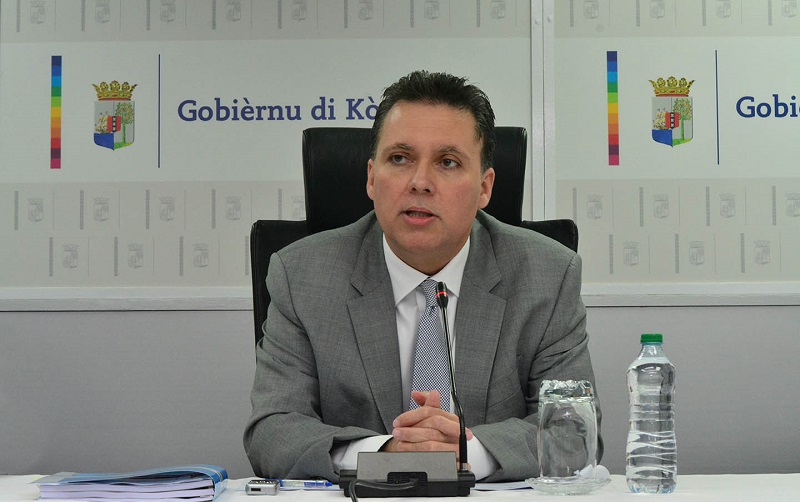The Centrale Bank of Curaçao and Sint Maarten (CBCS) decided to tighten its monetary policy stance further by raising the pledging rate1 by 25 basis points to 5.75%. This decision was taken in response to the increase of the Fed funds rate in July and a possible further increase in September.
Even though gross official reserves and import coverage have increased in the first eight months of this year, they are still expected to decline towards the end of 2023. The decline will be, however, less pronounced than in 2022. Therefore, the Monetary Policy Committee (MPC)2 of the CBCS will continue to monitor the economic and monetary developments in the monetary union closely and adjust the monetary policy stance if necessary.
The deficit on the current account of the balance of payments of the monetary union is expected to drop from 19.4% of GDP in 2022 to 13.5% of GDP in 2023 according to the latest projection. “The 2023 figure was adjusted downward by 0.7 percentage point from the June estimate, due mainly to a lower projected current account deficit, mitigated by a slightly lower nominal GDP level for the monetary union. The lower current account deficit is the result of a less negative net export of goods and services combined with stronger improvements of the income and current transfers balances”, explained CBCS’ executive director, Dr. José Jardim. The net export of goods and services is projected to be less negative in 2023 due primarily to higher expected foreign exchange earnings from bunkering activities across the monetary union.
By contrast, the forecast of foreign exchange receipts from tourism and ship-repair activities has been revised down on the back of lower projected earnings in Curaçao. Meanwhile, the forecast for total imports has remained practically unchanged”, he added. In the first eight months of 2023, gross official reserves increased by NAf.109.7 million. The rise in reserves was due mainly to the inflow of funds from the trust fund at the World Bank for the reconstruction of Sint Maarten and the transfers of funds from abroad by pension funds, mitigated by the net purchase of foreign exchange by the commercial banks from the CBCS. Nevertheless, gross official reserves are projected to drop slightly for the entire year as the projected external financing and capital transfers will not cover the deficit on the current account of the balance of payments.
1 The pledging rate is the rate at which commercial banks can borrow at the CBCS in case of a liquidity shortage.
2 The Monetary Policy Committee discusses the economic and monetary developments and the monetary policy stance at least on a quarterly basis. The Monetary Policy Committee takes decisions on the monetary policy stance and the deployment of monetary policy instruments that are ratified by the Board of Executive Directors of the CBCS.
The import coverage rose from 4.7 months at the end of 2022 to an estimated 4.8 months in August 2023, driven by the rise in gross official reserves while the projected target import of goods and services remained practically unchanged. In line with the projected decline in reserves for the entire year, the import coverage is expected to drop to 4.6 months at the end of 2023, still well above the norm of three months. Meanwhile, the liquidity of the commercial banks has increased somewhat up to the beginning of September, after almost halving in 2022.
After aggressively raising interest rates in 2022, the U.S. Federal Reserve (Fed) continued to increase its policy rate, although at a slower pace, as inflation has remained elevated in 2023. Expectations are that even though global inflation will ease due to, among other things, the monetary tightening by central banks and lower oil and nonoil commodity prices, it will remain elevated due to tight labor markets and imbalances between supply and demand. The Fed has so far increased the target policy rate at a slower pace and even left it unchanged in June 2023 on the back of lower inflation expectations.
As things currently stand, the Fed’s future decisions depend on the development in U.S. inflation, employment, and banking stress. “A change of the Federal funds rate affects immediately the international money market rates and, consequently, the interest rates in the money market of the monetary union of Curaçao and Sint Maarten as the NAf. is pegged to the US dollar”, Jardim indicated.
“In response to the increase in the Fed funds rate in July, a possible further increase in September, and to avoid that the domestic money market rates, particularly those offered on certificates of deposit (CDs), exceed the pledging rate, the CBCS decided to increase the pledging rate by 25 basis points to 5.75%, effective September 18, 2023. Furthermore, the CBCS will continue to offer longer maturities (i.e., 12, 26 and 52 weeks) on its bi-weekly auctions of CDs with the aim to hold bank liquidity longer domestically to support the maintenance of a solid foreign exchange position”, Jardim concluded. sxm-talks.com


